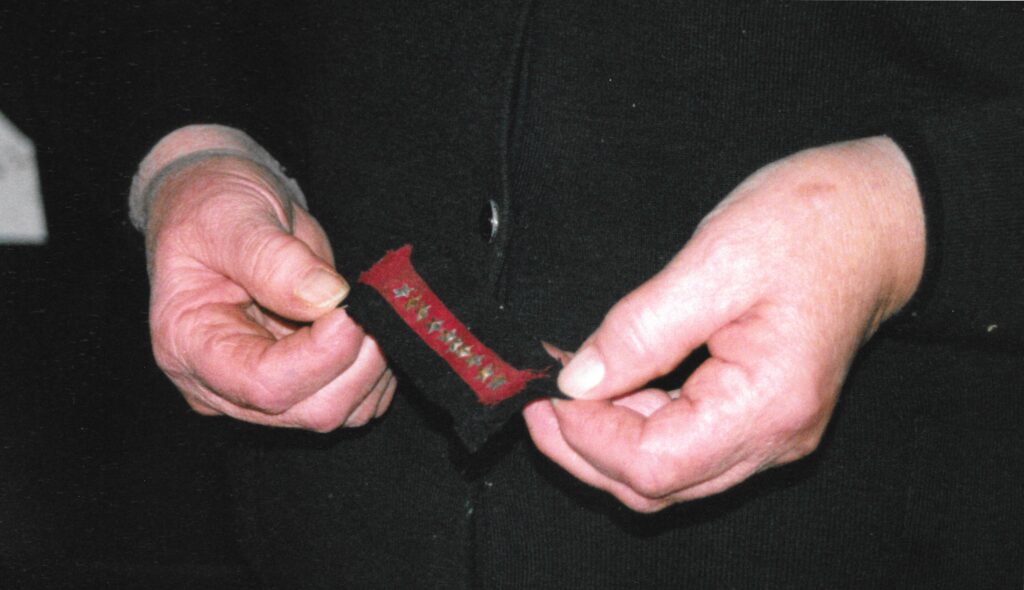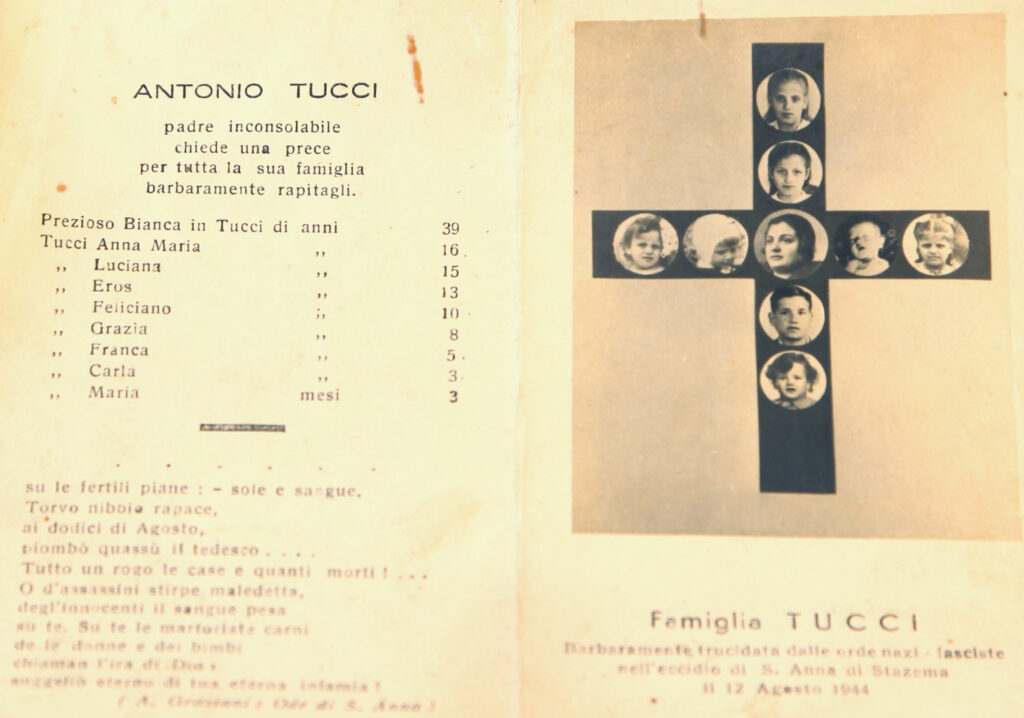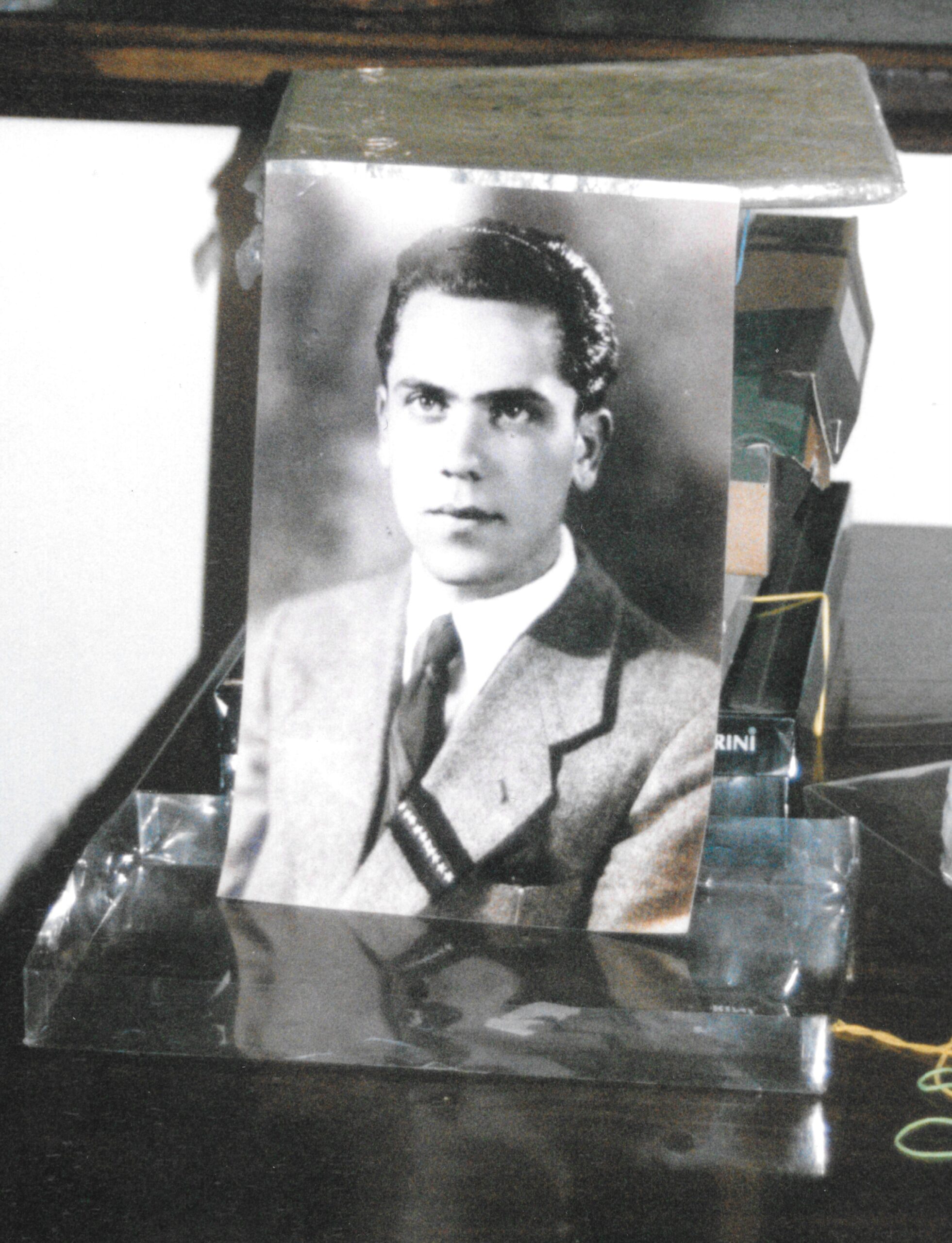Antonio Tucci was lieutenant in navy. After the Italian armistice (September 8, 1943) he fled to Sant’Anna di Stazzema with his wife and eight children. Only he managed to save himself from the Nazi massacre.
Antonio Tucci originally came from Foligno, but was stationed in Livorno. He had begged many people for a safe hiding place before he found hospitality in the local church of Sant’Anna di Stazzema. The Tucci family were not the only one displaced from distant cities: the Capiello family arrived from Naples, the Scaleo family from Genoa, the Scipioni family from La Spezia and the Tavolini family from Piombino. On 12 August 1944, when the news of the arrival of the Nazi soldiers circulated in the village, Antonio escaped into the woods with the other men of working age because he feared a roundup. He said goodbye to his wife Bianca Prezioso and to his eight children: Annamaria, Eros, Feliciano, Maria Grazia, Luciana, Franca, Carla and Maria. Like all the other escapees, he thought he would see them again once the Nazi operation was over. However, his family was rounded up and killed in the church square along with other women, children and the elderly. In the same square, the priest Don Innocenzo Lazzeri and the father of Leopolda Bartolucci were killed. In the days following the village massacre, Leopolda saw Antonio despair. In later years, she met him when he returned to the village to commemorate his family. Antonio told his story to Leopolda and gave her some photographs as well as eight stars symbolising mourning.
Today the stars are kept in the local museum. Don Giuseppe Vangelisti, the priest of Sant’Anna who had hosted him in the church together with other displaced persons, also spoke of Antonio’s pain several times. Don Vangelisti met Antonio after the massacre, when, together with 33 men, he began to bury and bless the bodies. Antonio was in front of the grave, shouting the names of his loved ones, and wanted to throw himself into the hole. He felt guilty for having escaped, for not having died with his wife and children. After the war, he returned to Foligno and got married. From this second marriage, three children were born — all were given a name of one of Antonio’s deceased children. In his new house, Antonio prepared a small altar, where every evening he prayed and remembered his children and wife, until he decided to take his own life in 1953.

© C. Di Pasquale

© Museo Sant’Anna di Stazzem
